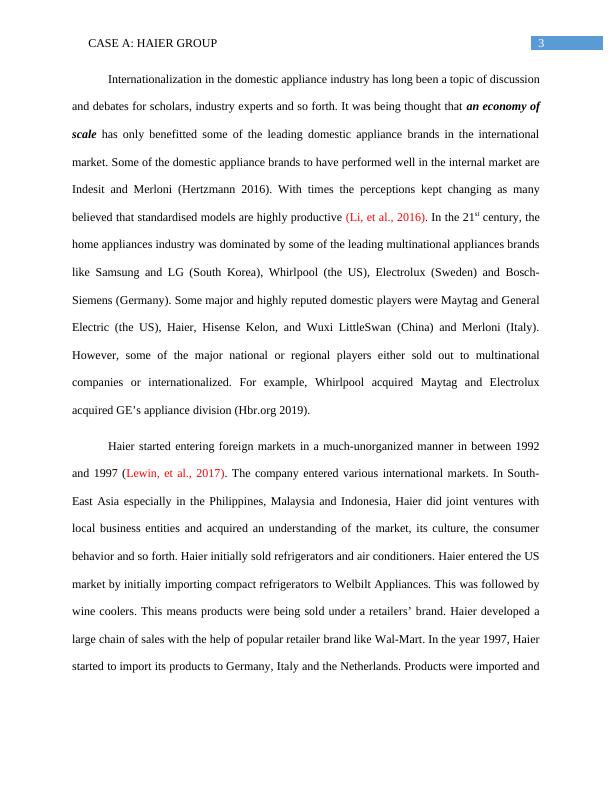Case A: Haier Group - Internationalization Strategy
An individual written report analyzing the internationalization strategy of Haier Group and comparing it to Western enterprises.
18 Pages5082 Words464 Views
Added on 2022-12-14
About This Document
This case study analyzes the internationalization strategy of Haier Group, focusing on its success in different markets and its unique management system.
Case A: Haier Group - Internationalization Strategy
An individual written report analyzing the internationalization strategy of Haier Group and comparing it to Western enterprises.
Added on 2022-12-14
ShareRelated Documents
End of preview
Want to access all the pages? Upload your documents or become a member.
Haier Group's Internationalisation Strategy: A Case Study Analysis
|15
|3810
|288
Haier's Internationalization Strategy: Influencing Organizational Strategy
|20
|5656
|91
Competitive Strategy and Innovation
|7
|2007
|50
Competitive Strategy and Innovation
|13
|4353
|88
Haier's Internationalisation Strategy and Management System
|11
|3173
|435
International Business Environment : Haier Analysis - IB 303
|8
|3320
|76




